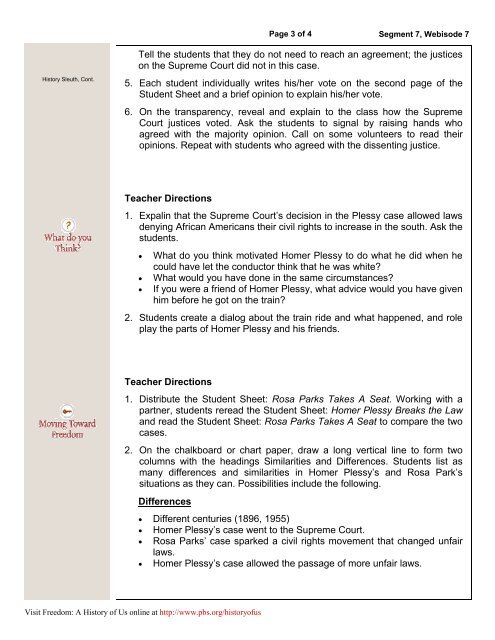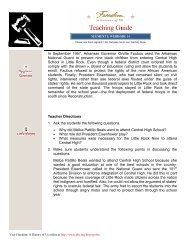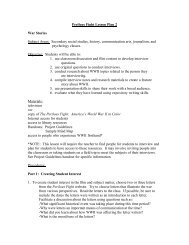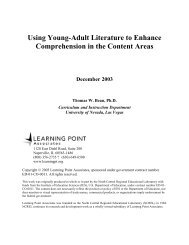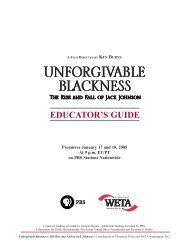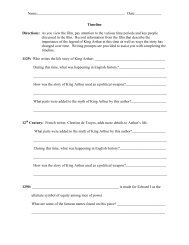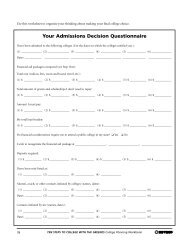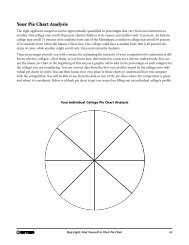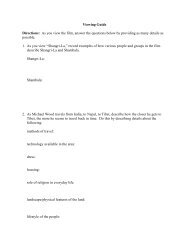Plessy v. Ferguson - PBS
Plessy v. Ferguson - PBS
Plessy v. Ferguson - PBS
You also want an ePaper? Increase the reach of your titles
YUMPU automatically turns print PDFs into web optimized ePapers that Google loves.
Page 3 of 4<br />
Segment 7, Webisode 7<br />
History Sleuth, Cont.<br />
Tell the students that they do not need to reach an agreement; the justices<br />
on the Supreme Court did not in this case.<br />
5. Each student individually writes his/her vote on the second page of the<br />
Student Sheet and a brief opinion to explain his/her vote.<br />
6. On the transparency, reveal and explain to the class how the Supreme<br />
Court justices voted. Ask the students to signal by raising hands who<br />
agreed with the majority opinion. Call on some volunteers to read their<br />
opinions. Repeat with students who agreed with the dissenting justice.<br />
Teacher Directions<br />
1. Expalin that the Supreme Court’s decision in the <strong>Plessy</strong> case allowed laws<br />
denying African Americans their civil rights to increase in the south. Ask the<br />
students.<br />
• What do you think motivated Homer <strong>Plessy</strong> to do what he did when he<br />
could have let the conductor think that he was white?<br />
• What would you have done in the same circumstances?<br />
• If you were a friend of Homer <strong>Plessy</strong>, what advice would you have given<br />
him before he got on the train?<br />
2. Students create a dialog about the train ride and what happened, and role<br />
play the parts of Homer <strong>Plessy</strong> and his friends.<br />
Teacher Directions<br />
1. Distribute the Student Sheet: Rosa Parks Takes A Seat. Working with a<br />
partner, students reread the Student Sheet: Homer <strong>Plessy</strong> Breaks the Law<br />
and read the Student Sheet: Rosa Parks Takes A Seat to compare the two<br />
cases.<br />
2. On the chalkboard or chart paper, draw a long vertical line to form two<br />
columns with the headings Similarities and Differences. Students list as<br />
many differences and similarities in Homer <strong>Plessy</strong>’s and Rosa Park’s<br />
situations as they can. Possibilities include the following.<br />
Differences<br />
• Different centuries (1896, 1955)<br />
• Homer <strong>Plessy</strong>’s case went to the Supreme Court.<br />
• Rosa Parks’ case sparked a civil rights movement that changed unfair<br />
laws.<br />
• Homer <strong>Plessy</strong>’s case allowed the passage of more unfair laws.<br />
Visit Freedom: A History of Us online at http://www.pbs.org/historyofus


